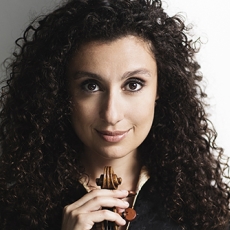Chouchane Siranossian - Tartini: Violin Concertos - MusicWeb International
Tartini was a talented musician who soon developed a considerable reputation. He worked in many of the major Italian musical centres, and spent several years further north in Prague. He concentrated particularly on writing for his own instrument, the violin, partly with the intention of improving techniques and standards of playing. In fact, he wrote more than a hundred violin concertos and a similar number of sonatas, as well as various compositions featuring wind instruments.
This compelling release featuring the violinist Chouchane Siranossian confirms that Tartini’s concertos are every bit as virtuosic as Vivaldi’s but the end result is less fiery and less directly exciting. Instead, the soloist’s dexterity is subordinated to give priority to a pervasive melodiousness.
The style can readily be heard in the Concerto in A major, D96. Its outer movements give priority to figurations divided into very clear phrases, and these dominate the texture while giving spaces for the articulation and shaping of the music. The solo line tends to move step by step rather than to leap, and in this sense the music recalls baroque operatic characteristics.
The jewel in the crown in this Tartini collection has to be the Concerto in D minor for violin, D45. Here matters are simplified, with a stronger emphasis on melodic contours in the phrasing. The first movement has a clearcut theme presented in clear short phrases, each expertly judged by both soloist and ensemble. This is even more the case in the beautiful central slow movement, marked Grave. The texture is not too insistent and the scoring is particularly subtle, and the soloist is frequently accompanied by only the other violins. Here the continuo part is discretion itself. The finale is characterised by a dance- like theme of great simplicity, with a directness that could almost be a folk tune.
Tartini recalled the aesthetics of the Enlightenment when he declared: “I am at home as much as I can be with Nature, and as little as possible with Art, having no Art but the imitation of Nature.” Perhaps this explains why his instrumental style relied so much on the phrasing of vocal lines and breathing, the very imitation of the human voice. His concertos strive towards this vocal ideal. It seems that Tartini preferred to use a longer bow, the better to express his cantabile melodies. This priority is found again and again in Chouchane Siranossian’s performances.
The Concerto in G minor is a first recording, a discovery edited by the musicologist Marguerita Canale, and very appealing it is too. This issue, released to coincide with the 250th anniversary of Tartini’s death in 2020, is a worthy tribute.

